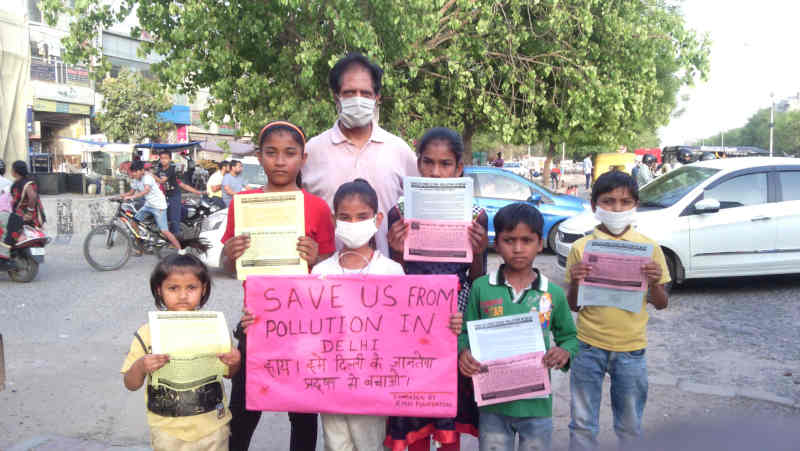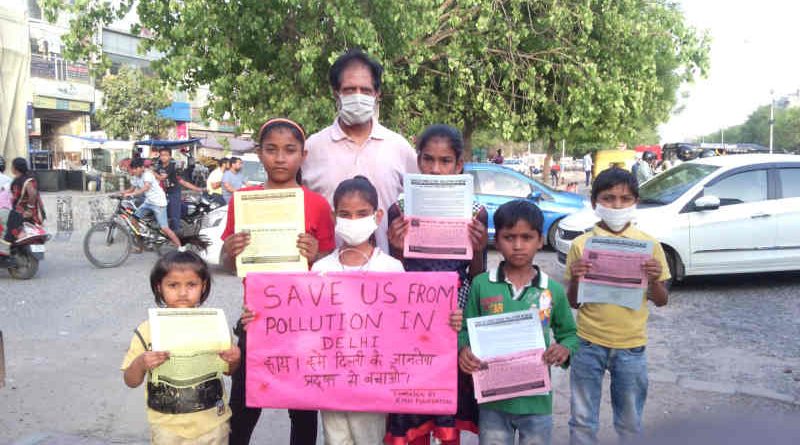Supreme Court on Pollution: Delhi Is Worse Than Hell

The Supreme Court of India observed today (November 25) that India’s capital New Delhi has become a toxic gas chamber. A two-judge bench of Justices Arun Mishra and Deepak Gupta observed that the living conditions in Delhi have become “worse than hell.”
Although the Supreme Court – which is in fact a toothless judicial institution – keeps making such random observations frequently, it fails to get its pollution-control suggestions implemented by the government which is full of corrupt and careless officials.
The court also admonished the Delhi Government saying that it has no right to rule. Ironically, the judges refuse to hold themselves accountable for the deteriorating air quality in Delhi. Instead of taking moral responsibility and leaving their own chair, they are questioning Delhi Government’s right to stay in the chair.
The Air Quality Index (AQI) in Delhi remains at hazardous or unhealthy level throughout the year. But the government and pollution-control agencies do not take any steps to combat pollution.
Although the government does not release data related to pollution-related deaths in Delhi, it is estimated that nearly 4,000 people die every month and thousands of others fall sick at the current level of pollution in the city.
| Air Quality Index (AQI) | PM2.5 Health Effects Statement | PM2.5 Cautionary Statement |
| Good (0-50) |
PM2.5 air pollution poses little or no risk. | None |
| Moderate (51-100) |
Unusually sensitive individuals may experience respiratory symptoms. | Unusually sensitive people should consider limiting prolonged outdoor exertion. |
| Unhealthy for Sensitive Groups (101-150) |
Increasing likelihood of respiratory symptoms in sensitive individuals, aggravation of heart or lung disease and premature mortality in persons with cardiopulmonary disease and the elderly. | Active children and adults, and people with respiratory disease, such as asthma, should limit prolonged outdoor exertion. |
| Unhealthy (151-200) |
Increased aggravation of heart or lung disease and premature mortality in persons with cardiopulmonary disease and the elderly; increased respiratory effects in general population. | Active children and adults, and people with respiratory disease, such as asthma, should avoid prolonged outdoor exertion; everyone else, especially children, should limit prolonged outdoor exertion. |
| Very Unhealthy (201-300) |
Significant aggravation of heart or lung disease and premature mortality in persons with cardiopulmonary disease and the elderly; significant increase in respiratory effects in general population. | Active children and adults, and people with respiratory disease, such as asthma, should avoid all outdoor exertion; everyone else, especially children, should limit outdoor exertion. |
| Hazardous (301-500) |
Serious aggravation of heart or lung disease and premature mortality in persons with cardiopulmonary disease and the elderly; serious risk of respiratory effects in general population. | Everyone should avoid all outdoor exertion. |
| Beyond Index (>500) |
Extremely High Levels of PM2.5 | |
As India is the most polluted country in the world, the pollution from India is spreading in all parts of the world. A new IQAir AirVisual report, which covered 3,000 cities of the world, has revealed that Gurugram (a.k.a. Gurgaon) a suburb of the Indian capital New Delhi is the most polluted city of the world while 22 of the top 30 polluted cities are in India.
Delhi remains the most polluted national capital across the world, as per a study conducted by the environment-protection organization Greenpeace. The air quality in the national capital region has been constantly deteriorating.
An interactive tool on the Breathe Life 2030 website shows a Particulate Matter (PM) 2.5 level of 143 micrograms per cubic metre (annual mean) in Delhi. This is over 14 times more than the WHO (World Health Organization) safe level of 10 µg/m3. Simply put, the people of Delhi are inhaling poison from the air.






